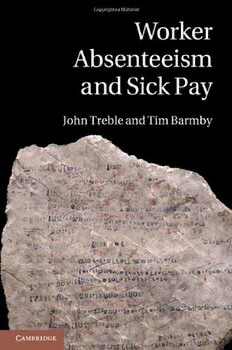
Worker Absenteeism and Sick Pay PDF
235 Pages·2011·1.075 MB·English
Most books are stored in the elastic cloud where traffic is expensive. For this reason, we have a limit on daily download.
Preview Worker Absenteeism and Sick Pay
Description:
Absenteeism is the single most important cause of lost labour time, yet it has received much less scholarly attention than more dramatic forms of industrial disruption, such as strikes. Arguing that any explanation of absence rates must take into account the interests of both employers and employees, this book constructs a model of the markets for absence and sick pay. These are not independent since sick pay affects workers' incentives to be absent, and absences affect employers' willingness to pay sick pay. The book reviews the available empirical evidence relating to both markets, stressing the importance of careful identification of the effect of the price of absence on demand, since this is a crucial quantity for firms' policies. It concludes by discussing the implications of the model for human resources management, and for the role of the state in sick pay provision.
See more
The list of books you might like
Most books are stored in the elastic cloud where traffic is expensive. For this reason, we have a limit on daily download.
